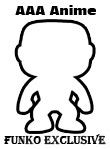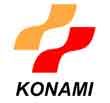Anime News
|
Who says little girls find them a turnoff? Date: 3/24/2005 |
|
Hundreds of Japanese comics aimed at girls will be released in the U.S. this year ? BY SUSAN CARPENTER Los Angeles Times Service A group of girls is running a dating service out of their school when they're caught by the principal, who then hires them to find a suitor for the woman who is stalking him. No, this isn't the latest plot twist in Days of Our Lives but the idea behind a shojo manga, or Japanese comic aimed at girls. Scheduled for a March release by the Viz publishing house, SOS is one of hundreds of shojo titles that will be released in the United States this year. Think ugly ducklings and reincarnated celestial maidens, girls pretending to be boys and young women striving to be the next supermodel. Illustrate the characters with big eyes and long legs, put them in books that are black and white and read backward, and you've got some of the hottest titles in a publishing genre that has almost doubled in sales in just two years. This year, the country's top Japanese comics publishers -- Viz in San Francisco and Tokyopop in Los Angeles -- are each increasing their shojo presence. Of the 400 manga, or comics, that Tokyopop will publish this year, more than half will be aimed at girls. Viz is releasing 140. This June, it will also launch a monthly anthology and line of graphic novels, both under the Shojo Beat moniker. Then there's TV. This fall, Fox's Saturday morning lineup will feature an anime version of the Tokyopop shojo series Tokyo Mew Mew, about a group of girls who transform into crime-fighting cats. Until recently, there just hadn't been much for girls. Sure, stories of bulked-up superheroes saving busty women appeal to boys, but there's typically little an 11-year-old girl can relate to. Ditto for the indies, which have more varied story lines but are for older readers. Even if there were a slew of tween girl comics, what awkward junior high schooler would risk wandering into a comic book store and rubbing elbows with its stereotypical man-child clientele? Shojo, like all manga, is where girls actually want to go -- in malls, at well-lighted bookstores. And the relationship-oriented stories follow subjects to which they can relate -- love, family, identity, responsibility -- in soap-opera serials spread over multiple volumes. To some, it may seem odd that comics following Japanese characters with Japanese names using Japanese slang would be as popular as they are among tween and teen girls this side of the Pacific. But the stories and graphics appeal to a group that's been weaned on Japanese animation, Pok?mon playing cards and Hello Kitty. ''For the past 10 years in America, there's been a growing sense that things from Japan are cool,'' said Frances Wall, an editor at Viz. ``Young people especially sort of find that something that's really different, that reads from the back, that's not from our culture, is really appealing.'' The American manga trend has its roots in anime, or Japanese animation, which first appeared here in the early '60s with the TV cartoons Astro Boy and Speed Racer. It wasn't until the '80s and '90s, however, that it really took root, with programs like Robotech and Pok?mon. Now huge portions of animated TV programming are anime. Since all anime begins as manga, it makes sense that those who are partial to the animated genre would seek out its published progenitor. In Japan, manga is separated into distinct categories that appeal along strict gender lines: action and shonen titles for boys; shojo for girls. In the United States, where gender roles are a bit blurrier, there is more crossover. The shojo manga trend here dates to 1998, when Tokyopop began publishing the shojo comic Sailor Moon. Two years later, Cartoon Network picked up the anime series on which it was based. Like most shojo titles published in the United States, Sailor Moon was licensed from its creators in Japan. But the genre has become so popular that more publishers are jumping into the market, making competition for Japanese licenses fierce. Marvel and DC Comics have launched manga imprints recently; so have Random House and Penguin Young Readers Group. Recognizing that desirable licenses eventually will run out, Tokyopop is encouraging homegrown talent with its semiannual Rising Stars of Manga contests, launched last year. Each contest yields about 1,000 entries -- many of them from non-Asian women. The winners are compiled into an anthology and some get book deals. This year, Tokyopop will publish eight to 10 shojo manga written and/or drawn by U.S. women, including Peach Fuzz, about a ferret descended from royalty, and Bizenghast, about a schizophrenic girl living in an abandoned mill town. ''Now that manga's been out there for a while, and these kids have grown up with manga, we really believe we can start doing authentic manga here,'' said Tokyopop senior editor Julie Taylor. ''It's not going to be like some rip-off of someone trying to do it like the Japanese. They can do it organically,'' Taylor added. Taylor sees the evidence every day in the dozens of pieces of fan mail and art that stream into her office from readers who relate to the story lines or become so invested in the characters that they want some say in how the stories should proceed. Said Taylor, ``It blows my mind how many people are into this.'' |
| Source: The Miami Herald |






















